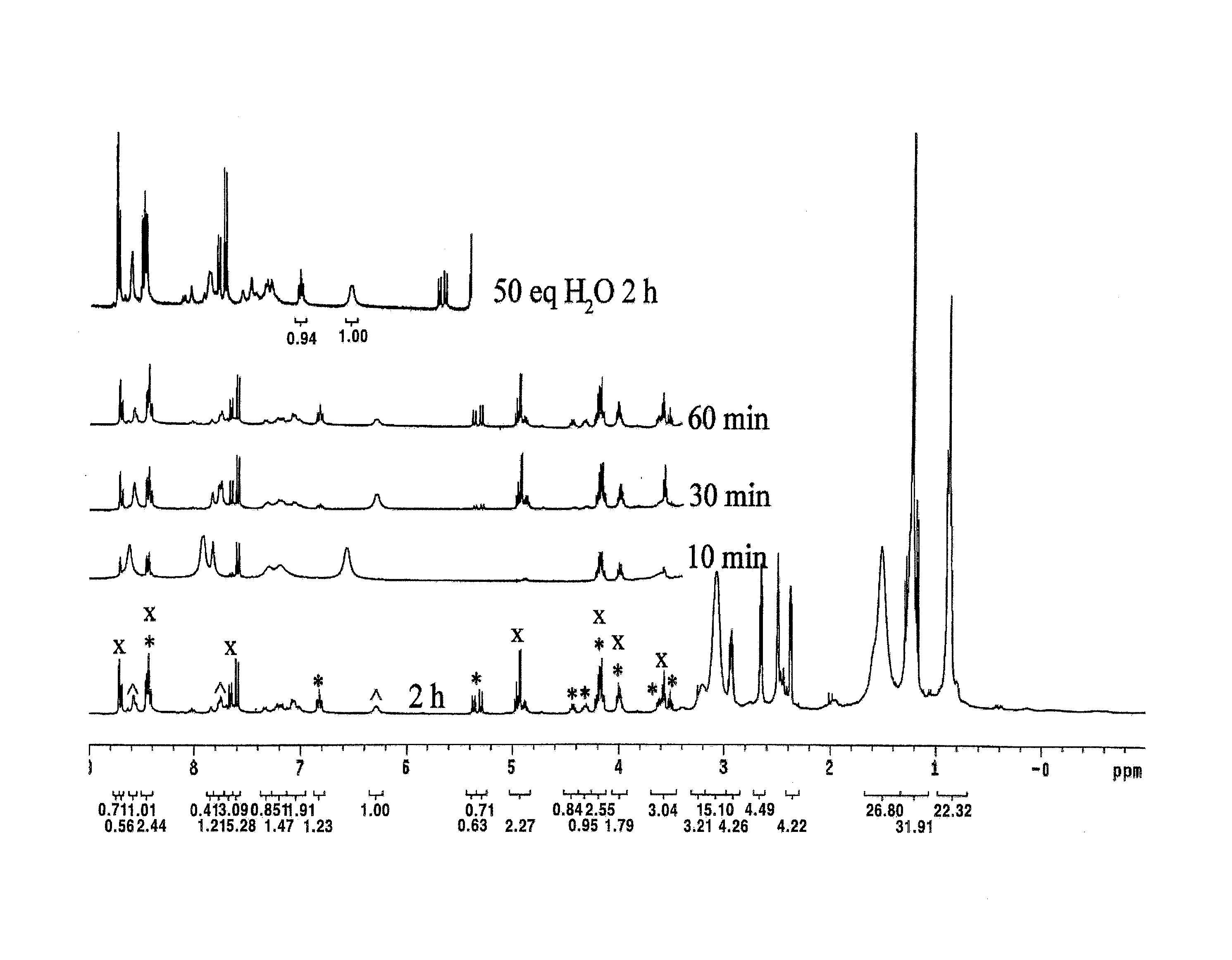Catalytic System for CO2/Epoxide Copolymerization
- Summary
- Abstract
- Description
- Claims
- Application Information
AI Technical Summary
Benefits of technology
Problems solved by technology
Method used
Image
Examples
preparing example 2
Synthesis of 100 mol % Sodium Dinitrophenolate
[0049]The anhydrous dinitrophenol (10.0 g, 54.3 mmol) was dissolved in anhydrous THF (300 mL) and then NaH (1.30 g, 54.3 mmol) was added slowly. After the solution was stirred for 3 hrs, solvent was removed under the reduced pressure to obtain 100 mol % sodium dinitrophenolate.
example 1
Synthesis of Compound 4
[0051]The ligand was synthesized according to the published reference (Bull. Korean Chem. Soc. 2009, 30, 745). In the glove box, after ligand (0.376 g, 0.230 mmol) and Co(OAc)2 (0.041 g, 0.230 mmol) was quantitatively added in 50 mL round flask, ethanol (17 mL) was added and the resulting solution was stirred for 3 hrs. Diethyl ether (20 mL) was added to precipitate a solid which was filtered using a glass filter, and then washed with diethyl ether (10 mL) three times. The solvent in the obtained orange solid was completely removed under the reduced pressure. 2,4-Dinitrophenol (0.022 g, 0.117 mmol) was added to a flask containing the above prepared Co(II) compound (0.200 g, 0.117 mmol), and the methylene chloride (5 mL) was added. After the solution was stirred for 3 hrs under oxygen atmosphere, the above prepared 60 mol % sodium dinitrophenolate (0.121 g, 0.585 mmol) was added and agitated for 12 hrs. After the solution was filtered using a glass filter, solv...
example 2
Synthesis of Compound 5
[0052]The compound 5 was synthesized by the same method as compound 4 using 4-nitrophenol. The reaction rate of O2-oxidation was slow, so the reaction was performed for 3 days. The anion exchange reaction was performed using 60 mol % sodium 4-nitrophenolate which are manufactured according to the method of manufacturing above 60 mol % sodium 2,4-dinitrophenolate. Yields 95%. 1H NMR (dmso-d6, 40° C.): δ 7.96 (br, 4H, (NO2)C6H4O), 7.77 (br, 1H, CH═N), 7.49 (br, 1H, (NO2)C6H4O), 7.10 (br, 1H, m-H), 7.02 (br, 2H, m-H, (NO2)C6H4O), 6.56 (br, 4H, (NO2)C6H4O), 3.97 (br, 1H, cyclohexyl-CH), 2.96 (br, 16H, NCH2), 2.61 (s, 3H, CH3), 2.09 (1H, cyclohexyl-CH), 1.89 (1H, cyclohexyl-CH), 1.55-1.05 (br, 37H), 0.87 (br, 18H, CH3) ppm.
PUM
| Property | Measurement | Unit |
|---|---|---|
| Fraction | aaaaa | aaaaa |
| Mass | aaaaa | aaaaa |
| Mass | aaaaa | aaaaa |
Abstract
Description
Claims
Application Information
 Login to View More
Login to View More - R&D
- Intellectual Property
- Life Sciences
- Materials
- Tech Scout
- Unparalleled Data Quality
- Higher Quality Content
- 60% Fewer Hallucinations
Browse by: Latest US Patents, China's latest patents, Technical Efficacy Thesaurus, Application Domain, Technology Topic, Popular Technical Reports.
© 2025 PatSnap. All rights reserved.Legal|Privacy policy|Modern Slavery Act Transparency Statement|Sitemap|About US| Contact US: help@patsnap.com



